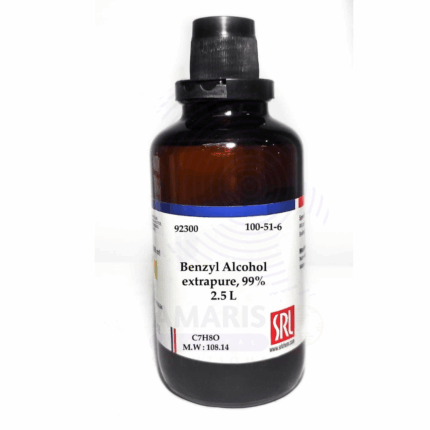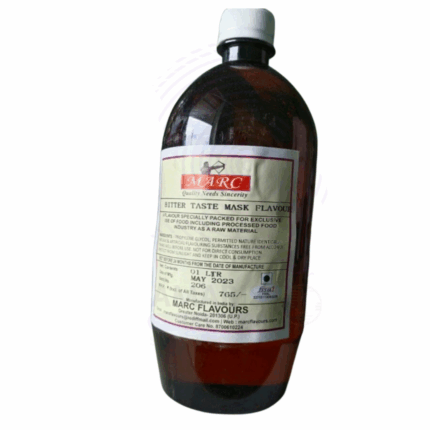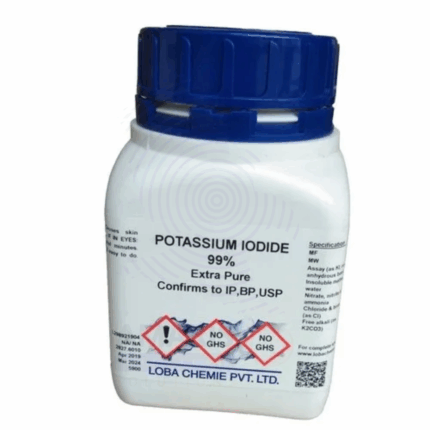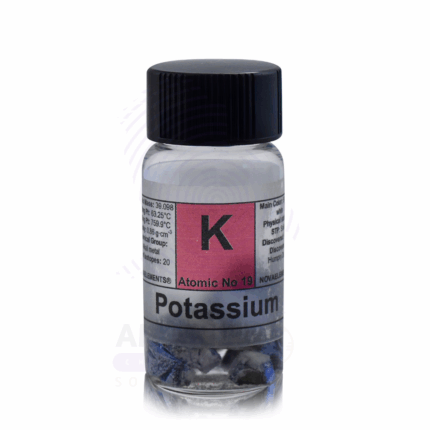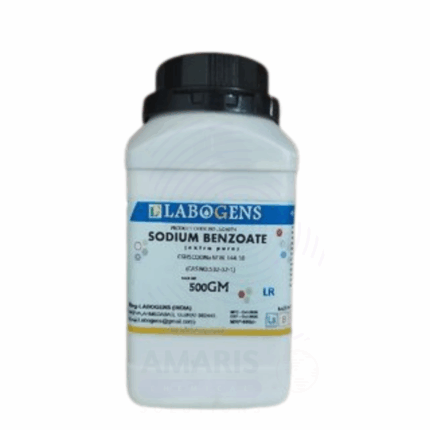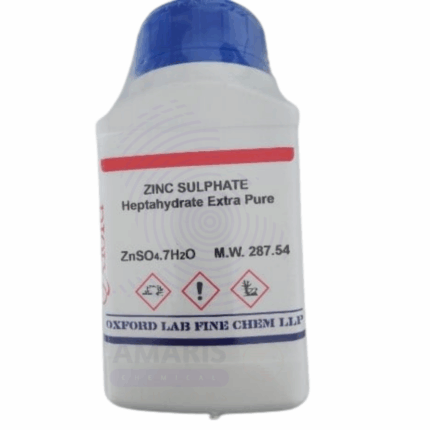
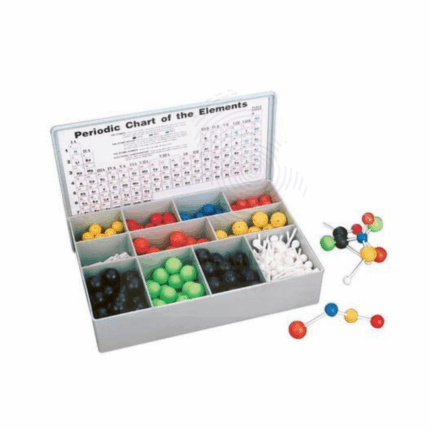
Lead Shot Extra Pure
$ 18.00 Original price was: $ 18.00.$ 17.87Current price is: $ 17.87.
Lead Shot Extra Pure consists of small, spherical pellets of high-purity lead, typically used in specialized industrial, laboratory, and ballistic applications. In laboratories, it serves as a dense, inert mass ideal for radiation shielding, counterweights, or ball-milling media due to its excellent malleability and high atomic mass. In metallurgy, it can be employed in alloy preparation or as a reducing agent under specific conditions. Its consistent size and purity make it especially useful where uniformity and minimal contamination are critical. Safe handling is essential, as lead is toxic, and prolonged exposure can pose serious health hazards. Proper PPE, ventilation, and disposal methods are mandatory.
Lead Shot Extra Pure
Primary Laboratory Uses:
- Radiation Shielding in Experimental Setups:
- Used extensively in labs as shielding material against X-rays and gamma rays, especially in nuclear physics or radiochemical labs.
- Density and Buoyancy Experiments:
- Serves as a high-density mass for demonstrating Archimedes’ principle, displacement, and density measurements in physics labs.
- Catalyst Bed Support:
- Occasionally used as an inert packing material or support bed in certain chemical reactors or gas flow experiments.
Secondary Laboratory Uses:
- Ballistics and Impact Testing:
- Used in controlled mechanical impact studies or penetration testing setups in materials science.
- Electrochemical Research:
- May serve as a reagent source of lead ions when oxidized or in electroplating experiments under controlled conditions.
- Educational Demonstrations:
- Ideal for school or university-level physics classes to demonstrate properties of heavy metals and force distribution.
| PACK SIZE |
250 grams Plastic Tin |
|---|
1. Basic Identification Attributes
- Chemical Name: Lead Shot
- Synonyms: Metallic lead spheres, spherical lead granules
- Chemical Formula: Pb
- CAS Number: 7439-92-1
- Molecular Weight: 207.2 g/mol
- Grade: Extra Pure (laboratory/analytical grade)
- Appearance: Small, gray, metallic spheres or pellets
- Odor: Odorless
- Solubility: Insoluble in water; soluble in nitric acid and hot alkalis
- Melting Point: ~327 °C
- Density: ~11.34 g/cm³
2. Safety & Hazard Attributes
- GHS Classification:
- Reproductive toxicity – Category 1A
- Specific target organ toxicity (repeated exposure) – Category 2
- Aquatic chronic toxicity – Category 1
- Hazard Statements:
- H360: May damage fertility or the unborn child
- H373: May cause damage to organs through prolonged or repeated exposure
- H410: Very toxic to aquatic life with long lasting effects
- Precautionary Statements:
- P201: Obtain special instructions before use
- P260: Do not breathe dust or fumes
- P280: Wear protective gloves/protective clothing/eye protection
- P308+P313: If exposed or concerned: Get medical advice
- P273: Avoid release to the environment
- Personal Protective Equipment (PPE):
- Chemical-resistant gloves
- Safety goggles
- Lab coat
- Work under fume hood if melting or machining
- First Aid Measures:
- Inhalation (if heated): Move to fresh air; seek medical attention
- Skin Contact: Wash thoroughly with soap and water
- Eye Contact: Rinse cautiously with water for several minutes
- Ingestion: Rinse mouth; seek medical advice immediately
- Fire Hazards:
- Non-flammable in solid form
- Emits toxic fumes of lead oxides when heated
3. Storage & Handling Attributes
- Storage Conditions:
- Store in a cool, dry, well-ventilated area
- Keep container tightly sealed
- Avoid contact with acids and oxidizing agents
- Handling Tips:
- Avoid generation of dust
- Do not eat, drink, or smoke while handling
- Wash hands thoroughly after use
4. Laboratory Applications
- Primary Uses:
- Density and mass experiments in physics labs
- Calibration weights
- Radiation shielding in experimental setups
- Used in historical metallurgy demonstrations
- Secondary Uses:
- Teaching sample for heavy metals and toxicity
- Control material for X-ray or gamma shielding studies
- Demonstration of Newtonian mechanics (e.g., inertia, momentum)
SAFETY PRECAUTIONS
Personal Protective Equipment (PPE):
- Wear a lab coat, nitrile gloves, and safety goggles.
- If generating dust (e.g., during cutting or grinding), use a NIOSH-approved respirator or work in a well-ventilated area.
Handling:
- Handle with care to avoid dust generation or ingestion.
- Do not eat, drink, or smoke when using this material.
- Wash hands and exposed skin thoroughly after handling.
- Avoid long-term or repeated exposure—lead is a cumulative poison.
Storage:
- Store in a cool, dry, well-ventilated area.
- Keep the container tightly closed and clearly labeled.
- Store away from acids, oxidizers, and food items.
- Ensure storage area complies with hazardous material regulations.
FIRST AID MEASURES
Inhalation:
- Remove to fresh air.
- If breathing difficulties develop, seek medical attention.
Skin Contact:
- Wash thoroughly with soap and water.
- Remove and launder contaminated clothing.
- Get medical advice if irritation or symptoms persist.
Eye Contact:
- Rinse cautiously with water for several minutes.
- Remove contact lenses if present and easy to do.
- Continue rinsing and seek medical attention if irritation occurs.
Ingestion:
- Do not induce vomiting.
- Rinse mouth with water.
- Seek immediate medical attention—lead is highly toxic, even in small amounts.
FIRE FIGHTING MEASURES
Flammability:
- Non-flammable. Lead shot will not ignite or burn under normal conditions.
Extinguishing Media:
- Use suitable media for surrounding fire (e.g., dry chemical, CO₂, foam, water spray).
- Lead itself does not burn but may become hazardous if melted.
Hazardous Combustion Products:
- Heating may produce toxic lead fumes (lead oxide).
Firefighter Protection:
- Wear self-contained breathing apparatus (SCBA) and full protective gear.
- Avoid inhaling metal fumes; control run-off to prevent environmental contamination.


 Preservatives(food)
Preservatives(food) Flavor Enhancers
Flavor Enhancers Acidulants
Acidulants Sweeteners
Sweeteners Antioxidants
Antioxidants Colorants(food)
Colorants(food) Nutraceutical Ingredients (food)
Nutraceutical Ingredients (food) Nutrient Supplements
Nutrient Supplements Emulsifiers
Emulsifiers
 Collectors
Collectors Dust Suppressants
Dust Suppressants Explosives and Blasting Agents
Explosives and Blasting Agents Flocculants and Coagulants
Flocculants and Coagulants Frothers
Frothers Leaching Agents
Leaching Agents pH Modifiers
pH Modifiers Precious Metal Extraction Agents
Precious Metal Extraction Agents
 Antioxidants(plastic)
Antioxidants(plastic) Colorants (Pigments, Dyes)
Colorants (Pigments, Dyes) Fillers and Reinforcements
Fillers and Reinforcements Flame Retardants
Flame Retardants Monomers
Monomers Plasticizers
Plasticizers Polymerization Initiators
Polymerization Initiators Stabilizers (UV, Heat)
Stabilizers (UV, Heat)
 Antifoaming Agents
Antifoaming Agents Chelating Agents
Chelating Agents Coagulants and Flocculants
Coagulants and Flocculants Corrosion Inhibitors
Corrosion Inhibitors Disinfectants and Biocides
Disinfectants and Biocides Oxidizing Agents
Oxidizing Agents pH Adjusters
pH Adjusters Scale Inhibitors( water)
Scale Inhibitors( water)
 Antioxidants(cosmetic)
Antioxidants(cosmetic) Emollients
Emollients Fragrances and Essential Oils
Fragrances and Essential Oils Humectants
Humectants Preservatives
Preservatives Surfactants(cosmetic)
Surfactants(cosmetic) Thickeners
Thickeners UV Filters
UV Filters
 Fertilizers
Fertilizers Soil Conditioners
Soil Conditioners Plant Growth Regulators
Plant Growth Regulators Animal Feed Additives
Animal Feed Additives Biostimulants
Biostimulants Pesticides (Herbicides, Insecticides, Fungicides)
Pesticides (Herbicides, Insecticides, Fungicides)
 Active Pharmaceutical Ingredients (APIs)
Active Pharmaceutical Ingredients (APIs) Excipients
Excipients Solvents(pharmaceutical)
Solvents(pharmaceutical) Antibiotics
Antibiotics Antiseptics and Disinfectants
Antiseptics and Disinfectants Vaccine Adjuvants
Vaccine Adjuvants Nutraceutical Ingredients (pharmaceutical)
Nutraceutical Ingredients (pharmaceutical) Analgesics & Antipyretics
Analgesics & Antipyretics
 Analytical Reagents
Analytical Reagents Solvents(lab)
Solvents(lab) Chromatography Chemicals
Chromatography Chemicals Spectroscopy Reagents
Spectroscopy Reagents microbiology-and-cell-culture-reagents
microbiology-and-cell-culture-reagents Molecular Biology Reagents
Molecular Biology Reagents Biochemical Reagents
Biochemical Reagents Inorganic and Organic Standards
Inorganic and Organic Standards Laboratory Safety Chemicals
Laboratory Safety Chemicals Specialty Laboratory Chemicals(Special Laboratory Equipment)
Specialty Laboratory Chemicals(Special Laboratory Equipment)
 Demulsifiers
Demulsifiers Hydraulic Fracturing Fluids
Hydraulic Fracturing Fluids Scale Inhibitors(oil)
Scale Inhibitors(oil) Surfactants(oil)
Surfactants(oil) Drilling Fluids
Drilling Fluids
 Dyes and Pigments
Dyes and Pigments Bleaching Agents
Bleaching Agents Softening Agents
Softening Agents Finishing Agents
Finishing Agents Antistatic Agents
Antistatic Agents
 Admixtures
Admixtures Waterproofing Agents
Waterproofing Agents Sealants and Adhesives
Sealants and Adhesives Curing Compounds
Curing Compounds Concrete Repair Chemicals
Concrete Repair Chemicals Anti-Corrosion Coatings
Anti-Corrosion Coatings
 Surfactants(cleaning)
Surfactants(cleaning) Builders
Builders Enzymes
Enzymes Solvents (Cleaning)
Solvents (Cleaning) Fragrances
Fragrances
 Electronic Chemicals
Electronic Chemicals Catalysts
Catalysts Lubricants
Lubricants Photographic Chemicals
Photographic Chemicals Refrigerants
Refrigerants Automotive chemicals
Automotive chemicals Pyrotechnic Chemicals
Pyrotechnic Chemicals
 Biodegradable Surfactants
Biodegradable Surfactants Bio-based Solvents
Bio-based Solvents Renewable Polymers
Renewable Polymers Carbon Capture Chemicals
Carbon Capture Chemicals Wastewater Treatment Chemicals
Wastewater Treatment Chemicals
 Pigments
Pigments Solvents(paint)
Solvents(paint) Specialty Coatings
Specialty Coatings Binders/Resins
Binders/Resins Additives
Additives Driers
Driers Anti-Corrosion Agents
Anti-Corrosion Agents Functional Coatings
Functional Coatings Application-Specific Coatings
Application-Specific Coatings
 Fresh Herbs
Fresh Herbs Ground Spices
Ground Spices Whole Spices
Whole Spices Spice Blends
Spice Blends Dried Herbs
Dried Herbs
 Leavening Agents
Leavening Agents Dough Conditioners
Dough Conditioners Flour Treatments
Flour Treatments Fat Replacers
Fat Replacers Decoratives
Decoratives Preservatives(baking)
Preservatives(baking)
 Plasticizers & Softeners
Plasticizers & Softeners Reinforcing Agents
Reinforcing Agents Adhesion Promoters
Adhesion Promoters Vulcanizing Agents
Vulcanizing Agents Antidegradants
Antidegradants Blowing Agents
Blowing Agents Fillers & Extenders
Fillers & Extenders Accelerators & Retarders
Accelerators & Retarders

